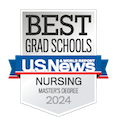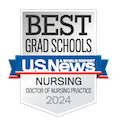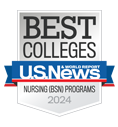Faculty impact: An advocate for teens, an adversary of human trafficking
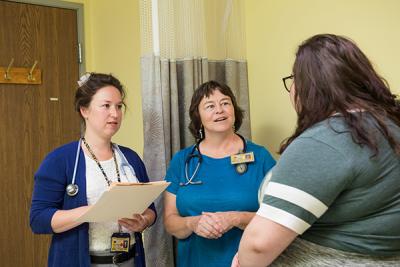 Michelle Pardee’s career is not what she envisioned as an undergraduate student at the University of Michigan School of Nursing (UMSN) nearly 30 years ago.
Michelle Pardee’s career is not what she envisioned as an undergraduate student at the University of Michigan School of Nursing (UMSN) nearly 30 years ago.
“I was going to be a head nurse at a hospital and be in that role forever,” said Pardee. “None of this was my plan. Getting my doctorate and being faculty were not on my radar.”
The “this” Pardee refers to is a multifaceted role as lead faculty for UMSN’s Family Nurse Practitioner master’s program, a leadership position with U-M Interprofessional Center for Education and more than 20 years as a nurse practitioner at a teen health center.
Choosing nursing
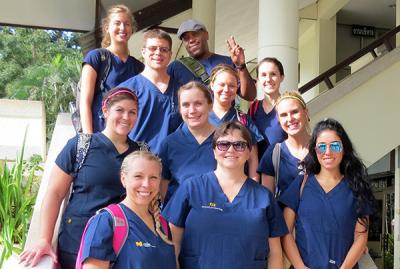 Pardee had considered medical school but wanted a role that would give her more time with patients. Her first clinical experience as a UMSN student cemented her decision.
Pardee had considered medical school but wanted a role that would give her more time with patients. Her first clinical experience as a UMSN student cemented her decision.
“When I had that first interaction with a patient, I knew this was exactly what I wanted to do,” she said.
Finding the people she most wanted to help also came from clinicals during her education.
“I love working with adolescents,” she said. “For the most part, they are physically healthy, but they can have behavioral, psychological and social struggles on a daily basis. We try to intervene in risk behaviors to prevent long term issues and to reduce the impact of physical disease. Working with adolescents to improve their lives, however we can, is my goal.”
Practice
Pardee has worked at the Taylor Teen Health Center for more than 20 years. It serves Wayne County adolescents—providing everything from routine physicals and vaccinations to family planning and injuries.
She wanted to maintain her practice, but also began to think about teaching. She earned a position at UMSN, first as a lecturer and now as a clinical assistant professor, with a schedule that gives her a full day every week to practice at the center and continue her efforts to help adolescents.
“At this age group [adolescent], if you can stop some of the negative behavior patterns, they have a better shot at being successful in school, being able to get a job and being a contributing member of society,” she said.
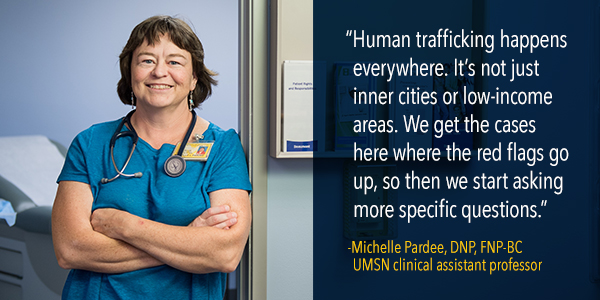
Human trafficking
Pardee says she has seen a troubling increase in areas of concern such as IV drug use and sexually transmitted infections including HIV, but what distresses her the most right now is the spike in human trafficking.
“Human trafficking happens everywhere,” she said. “It’s not just inner cities or low-income areas. We had a survivor who was trafficked in high school from West Bloomfield, an affluent community, speak to us about her experience. We get the cases here where the red flags go up, so then we start asking more specific questions.”
Screening for potential victims, including labor trafficking victims most likely to be teens who got caught up in promises of a high-paying summer job or sex trafficking victims, is now part of Pardee’s routine.
“Traffickers are really good at picking targets,” she explains. “They find kids who are vulnerable, even if they’re living with their parents. Then, they find ways to separate them from their friends and families. And of course, runaways are more at risk because they need food, clothing and shelter.”
Power of a nurse
Pardee says getting adolescents to open up, whether it’s to discuss a health concern they find embarrassing or to admit they are a victim of trafficking, can take time but says nurses are generally equipped with the right skills and character to find a way to connect.
“Nurses generally approach issues in a very non-judgmental way,” she explained. “The kids learn I’m here to help and I just need to know this information to make a plan that is beneficial to them. With this age group, if they feel that you respect them, they are willing to share.”
Teamwork and higher education
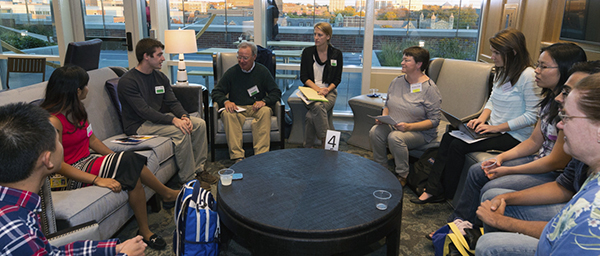
Pardee also sees the benefits of an interdisciplinary approach in both routine and high-risk cases. She’s become invested in increasing that method through her role on the executive committee of U-M’s Center for Interprofessional Education (IPE) and in teaching a team decision-making course for graduate students.
“IPE puts everyone on the same playing field,” she said. “It helps nurses realize the value of what they provide and learn about the skill sets of others. As we get more students who are educated in teams, it’s going to change the system. It takes away the stress and battles of who is in charge, so not only does it benefit patients and outcomes, it increases your job satisfaction. I see the benefits all the time.”
Pardee also credits her Doctorate of Nursing Practice degree for improving her career experiences.
“It’s given me a broader perspective of health care,” she said. “It got me much more involved in policy activities and managing activities in a clinic setting. Research is not my thing. My thing is impacting patients and families in a hands-on, on-the-ground way.”



